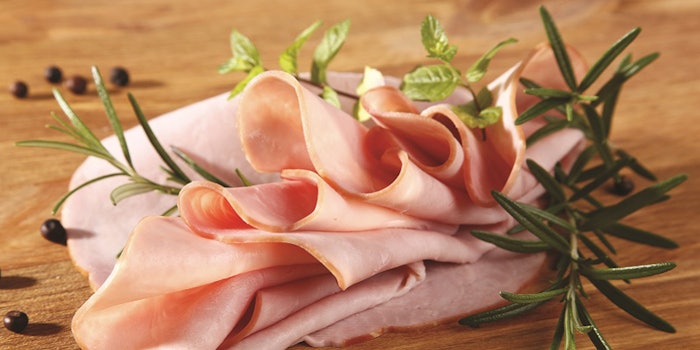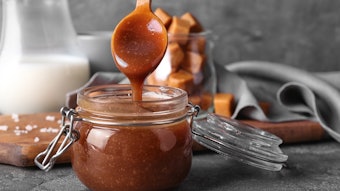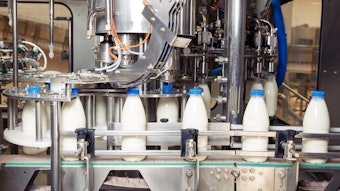
trans-2-Octenal (FEMA# 3215, CAS# 2548-87-0) has an extremely powerful fatty character, but it also has a subtle hint of the fruity green apple note that dominates the profile of the lower unsaturated aldehydes, such as trans-2-hexenal. This interesting combination of odor characteristics does not reduce its effectiveness in the wide range of flavors that can make obvious use of an overtly fatty note, but it does make it very effective in an unusually diverse range of less obvious flavors.
Note that the dose rates given throughout this article are the levels suggested for use in flavors intended to be dosed at 0.05% in ready-to-drink beverages or in a simple bouillon.
Savory Flavors
Bacon: The brightness and sheer power of this raw material make it especially effective when set in competition with some of the bacon sulfur notes, giving an attractive fatty character at around 200 ppm.
Beef, Roast: trans-2-Octenal can be used in all types of beef flavors, including boiled beef, but it is obviously most effective in roast beef profiles. A good starting point is 150 ppm.
Bread: Bread flavors, in their many different guises, are given more lift and authenticity by quite high levels, around 200 ppm, of this material. It is arguably most effective in pizza base flavors.
Chicken: The unsaturated aldehyde notes play a vital role in all chicken flavors, and the best effect is, in my opinion, achieved by using a combination including about 100 ppm of trans-2-octenal.
Corn, Toasted: Corn chip and cornflake flavors both make good use of the fatty note of this ingredient. Ideal levels vary, depending on the profile required, but 100 ppm is a good place to start.
Garlic and Onion, Fried: Neither garlic nor onion flavors have much call for an intrusive fatty note, but fried or toasted versions are certainly helped by modest levels, around 20 ppm in both instances, of trans-2-octenal.
Grill: At the other extreme, grill and barbeque flavors require much higher levels of trans-2-octenal, usually in conjunction with other unsaturated aldehydes. Even a level as high as 300 ppm is not out of place.
Ham: trans-2-Octenal, added at a level in the region of 100 ppm, is particularly helpful in ham flavors. It conveys something of the fatty character from the meat itself and also makes the cooked aspect of the flavor profile appear to be less “boiled.”
Mushroom, Cooked: Many chemicals could potentially help to build the cooked character of mushrooms, which has an intrinsic rawness, but this ingredient stands out because it combines well with 1-octen-3-ol and reduces the perception of raw mushrooms. A level of 50 ppm is effective.
Potato: Cooked potato flavors cover a wide range of different profiles and trans-2-octenal is decidedly more in fried potato flavors than in mashed potato flavors. Levels of use can run as high as 200 ppm.
Rice: The same comments are obviously equally true for rice flavors but, even in plain boiled rice flavors, trans-2-octenal can be used to good effect at a significant level, around 50 ppm.
Seafood: This ingredient is surprisingly useful in white fish flavors at levels in the region of 100 ppm. It also performs well at a similar level of use in all types of seafood flavors, especially crab and lobster.
Tomato, Fresh: It might seem better to use trans-2-octenal in cooked or dried tomato flavors but in reality it actually performs best in fresh flavors. A good starting point is 100 ppm.
Nut Flavors
Hazelnut: trans-2-Octenal is a very useful addition to all categories of nut flavors, but it works particularly well in hazelnut and praline flavors. A level of 200 ppm is ideal in most profiles.
Peanut: The same comments are true of peanut flavors but the ideal level does vary depending on the profile. Generally, the best level of addition is a little lower for hazelnut flavors, nearer 100 ppm.
Walnut: Walnut flavors, just like hazelnut flavors, can make good use of quite high levels of trans-2-octenal and 200 ppm is also the ideal level of addition in this flavor category.
Dairy Flavors
Butter, Fresh: The role of trans-2-octenal in dairy flavors, in general, is relatively subtle, but it plays its most important part in this category in butter flavors. A good starting level in fresh butter flavors is 50 ppm.
Cheese, Cheddar: The attractive fatty note of this ingredient is also helpful in cheese flavors, particularly cheddar cheese. The best level of addition is in the region of 20 ppm.
Milk: A level of 10 ppm works equally well in fresh milk flavors and in condensed milk flavors, just adding a slight hint of a fatty note, but significantly increasing authenticity.
Fruit Flavors
Apricot: In fruit flavors we are always looking at subtle additions of trans-2-octenal, just a hint of a fatty note to add realism to the profile. In apricot flavors, a good level of use is around 10 ppm.
Blueberry: trans-2-Octenal also works very well in blueberry flavors and here the level, although still subtle, can usefully be taken a little higher than for apricot flavors, up to 20 ppm.
Orange: In all the many different types of orange, tangerine and mandarin flavors, 10 ppm of trans-2-octenal adds notable authenticity, blending well with higher molecular weight unsaturated aldehydes.
Peach: This ingredient works in peach flavors in a very similar way to apricot flavors and the ideal level of addition is also similar, in the region of 10 ppm.
Plum: Plum flavors might seem simple but they can be surprisingly difficult to make with a really authentic character. A tiny addition of trans-2-octenal can have a surprisingly beneficial effect. A level of 5 ppm is close to ideal.
Watermelon: In contrast, few watermelon flavors make any real claim to authenticity and seem dominated by tutti frutti notes. Nevertheless, 10 ppm of this ingredient does provide a welcome contrast to the harsh cucumber green notes.
Other Flavors
Tea: trans-2-Octenal is an important ingredient in all styles of tea flavors. It is probably most at home in black tea flavors, where the best level of use is around 50 ppm. It also adds depth and realism to green tea flavors, although at a slightly lower level, nearer 30 ppm.











